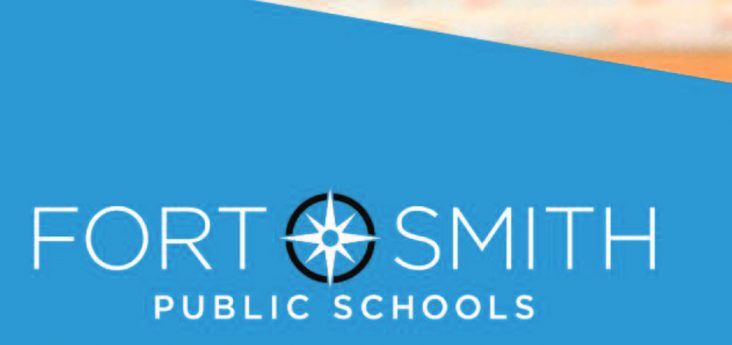Fort Smith Public Schools issues annual report, focus on changes from millage work
by September 23, 2019 9:04 pm 722 views

It has been a great year for career education in Fort Smith Public Schools, Dr. Doug Brubaker, superintendent, told the FSPS Board of Education at its regular meeting Monday night (Sept. 23).
One of the key components of the Vision 2023 initiative that led to a voter-approved millage increase in 2018 was to “develop and implement education and career pathways so that each student graduates with a viable plan and relevant skill set” for the future, Brubaker said.
Fort Smith schools are striving toward that he noted in the district’s annual report. Fort Smith voters on May 22 approved the school millage increase, the first in 31 years, raising the millage rate in Fort Smith from 36.5 mills to 42 mills. The new rate is expected to raise $120.822 million, $35 million of which will go toward district-wide safety improvements.
A student internship program for senior high students began in 2017 with 20 students in the program, Brubaker said. This fall there are 120 students enrolled in the program.
In addition to safety work, the millage plan included a new $13.724 million Career and Technology Center featuring specialized lab spaces and classrooms for courses in healthcare, information technology, and advanced manufacturing within the STEAM (Science, Technology, Engineering, Art, and Math) disciplines. The former Hutcheson shoe facility in east Fort Smith was donated to FSPS for use as the center in February, saving the district at least $3 million that had been budgeted to buy an existing building. The facility should open in 2021.
Dr. Gary Udouj, Jr., was named the first director of the Career Education Center and District Innovation in June. A key part of his job will be renovation of a former warehouse into the Career and Technology Center. And a program development team for the center has been established, Brubaker said.
This along with the district’s summer enrichment programs in STEAM moved the district toward their goals, Brubaker said. More than 240 students, parents and teachers attended the district’s SummerTECHFest this year. The district has made strides in providing “appropriate technology that is consistently available, effectively supported, and equitably distributed,” the report states. This year 3,800 Chromebooks were distributed to students in 10th through 12th grades, Brubaker said.
“Those are new. This is a key benefit that came out of the millage,” he said.
Additionally, the district started 25 community coding clubs for students and four robotics teams.
In another step to prepare the students for their future, FSPS students earned 6,094 concurrent college credits through classes offered at the high schools in the 2018-19 school year, and there were 918 qualifying AP scores.
“It’s probably even more due to inflation, but I was told by Dr. (Monica) Riley, (interim executive director for the School of Education at the University of Arkansas Fort Smith), that every 12 hours represents $5,000 saved by students at a public university in Arkansas. If they go to a private school, which some of our student do, you are looking at amplifying that with those credit hours earned. That is a real benefit to our students,” Brubaker said.
On the safety end of the spectrum, the report states that four new secure vestibules were ready to go with the start of the 2019-2020 school year. Phases two and three of that project, which will include secure vestibules in the remaining 11 elementary schools in need of them, are in the planning stages and will be ready for students going back to school in August 2021.
Another component of increasing safety in FSPS schools is adding walls to turn the open-classroom plans of some of the elementary schools in the district into more secure and productive closed-classroom schools. Morrison Elementary, one of the schools included in that project, was remodeled over the summer, and students started the new school year in August with new traditional classroom floor plan.
“Students are saying they can concentrate better, and parents are loving it. We are looking forward to expanding this to other campuses,” Brubaker said.
Wall projects at the remaining three elementary schools — Barling, Cook and Woods — will be completed by August 2021.
